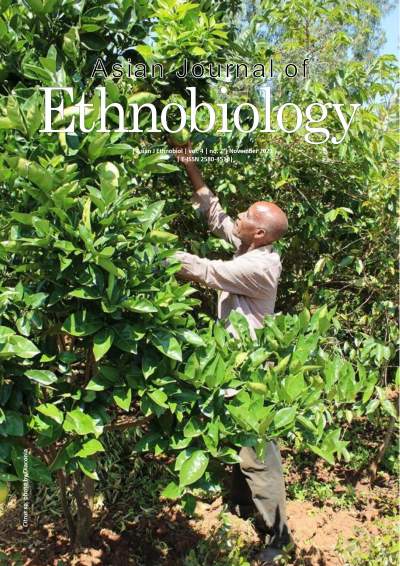Plants with insecticidal potential used by ethnic groups in North-Central Nigeria for the management of hematophagous insects
##plugins.themes.bootstrap3.article.main##
Abstract
Abstract. Adelaja OJ, Oduola AO, Abiodun OO, Adeneye AK, Obembe A. 2021. Plants with insecticidal potential used by ethnic groups in North-Central Nigeria for the management of hematophagous insects. Asian J Ethnobiol 4: 65-75. Studies on the traditional knowledge of insecticidal plants are vital in the discovery of bioactive components for the management of hematophagous insects. This study investigated the ethnobotany and traditional knowledge of insecticidal plants among nine ethnic groups in North-Central Nigeria. Information on identifying insecticidal plants and their traditional knowledge among community leaders, elders, herb sellers, and herbalists was collected between January and December 2017, using a semi-structured questionnaire. The mentioned plants were collected and identified. A total of 388 respondents were interviewed from nine ethnic groups. All the respondents had knowledge of medicinal and insecticidal plants in their communities. The respondents mentioned 17 insecticidal plants. The most frequently mentioned plants were Hyptis suaveolens (19.6%, 76/388), Ocimum gratissimum (18.7%, 73/388), and Citrus sinensis (10.8%, 42/388). Hanging of plants in homes was reported among 52.9% of the respondents and smoldering for personal protection among 47.1%. The respondents also acknowledged that these plants were available (88.4%), accessible (77%), and very effective (76.3%) in controlling hematophagous insects. There was a significant relationship (P<0.05) between the perceived efficacy of these plants and the gender, age, educational status, and ethnicity of respondents. This study documented the knowledge and evidence of insecticidal plants among ethnic groups in North-Central Nigeria.
2018-01-01

